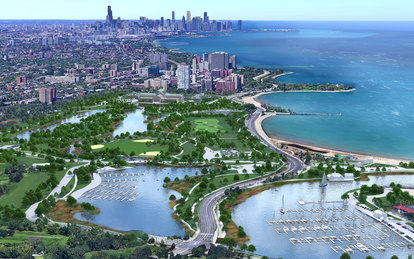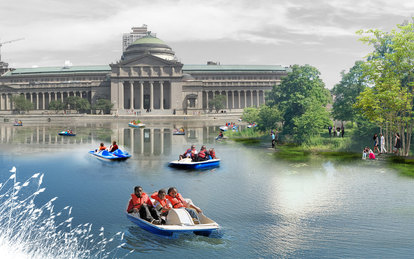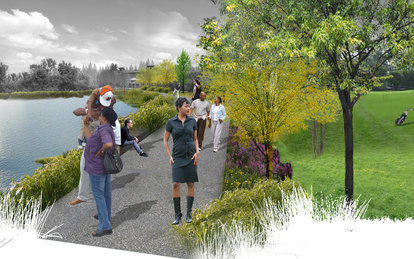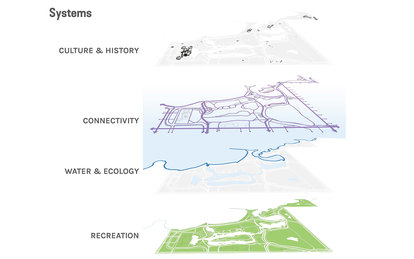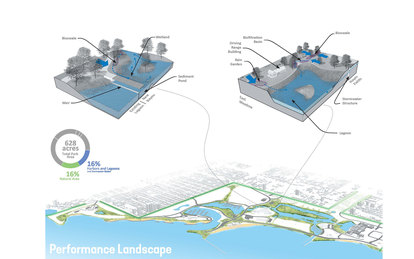芝加哥南湖滨规划框架
Cities with historic urban parks are challenged by the need to balance preservation and restoration with increased funding demands and the changing needs of contemporary park users. Chicago’s South Lakefront Framework Plan exemplifies how a committed community-based process helped forge a shared vision for the future for two of the city’s oldest, most culturally significant parks.
客户
Chicago Park District
位置
Chicago, Illinois
市场/服务
Civil Engineering, Coastal Engineering, Community & Regional Parks, Landscape Architecture, Parks & Open Spaces, Urban Design, Urban Environments, Urban Parks & Public Spaces, Waterfront, Waterfront Plans
大小
627 AC
特色奖项
Honor Award, Chicago Chapter of the American Institute of Architects (AIA Chicago), Urban Design, 2019
Editors' Pick, Architect's Newspaper, Unbuilt Landscape, 2019
Honor Award, Wisconsin Chapter of the American Society of Landscape Architects (WI ASLA), Category B - Analysis and Planning, 2019
Designed by Frederick Law Olmsted and Calvert Vaux for the 1893 World’s Columbian Exhibition, Jackson Park and the adjacent South Shore Cultural Center on Lake Michigan serve a diverse population in Chicago’s South Side neighborhoods. After more than a century, Jackson Park remains a global destination that houses the Museum of Science and Industry, adjacent to the world-renowned University of Chicago.
The proposal to locate the Barack Obama Presidential Center in Jackson Park, along with a proposal to consolidate two public golf courses into a PGA-caliber venue designed by Tiger Woods’ team, raised many questions about the South Lakefront’s future. Could the South Lakefront accommodate these more tourist-oriented facilities while continuing to provide residents with its unique blend of active recreation and environmental open space?
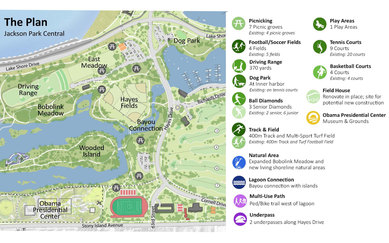
SmithGroup partnered with the Chicago Park District to develop a framework plan that gave the community a strong voice in the planning and development conversations for the South Lakefront. Our team facilitated a wide range of public meetings and stakeholder strategy sessions that gathered the desires and wishes of residents. This engaged dialogue led to the guiding principles that form the core of the framework plan: serve the community and the world; steward environmental integrity and beauty; foster equity and inclusivity for a racially and culturally diverse population; and renew and maintain the parks’ legacy.
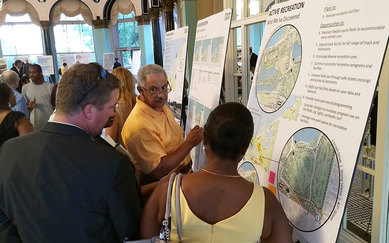
Engaging with the public through meetings and stakeholder strategy sessions became integral to the development of the plan.
The plan’s recommendations also emerged through this consensus-building process, focusing on the parks’ key systems for recreation, mobility, cultural use, and ecology. Treating the two parks as one while maintaining their historic individual identities, the plan was able to make significant advances in water-based ecology. These include building bridges and boardwalks along the restored banks of the Jackson Park lagoons; improving water quality through riparian waterways called bayous, reconnecting the lagoons with Jackson’s inner harbor; and leveraging new lakefill at the 63rd Street Beach and new offshore breakwaters at the La Rabida Children’s Hospital peninsula.
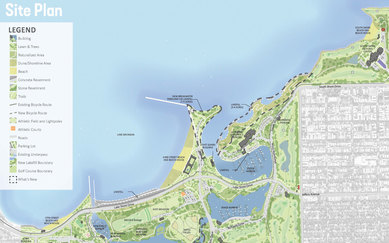
All the strategies provide new park and conservation land while protecting the shoreline from the pummeling surf of Lake Michigan.
Many other active and passive recreational amenities abound in the framework – including the new soccer fields requested by residents. The resulting plan takes advantage of new opportunities for the South Lakefront while making sure it continues to serve residents and visitors alike.
By upholding and celebrating Olmsted’s idea that parks serve a democratic and restorative role in city life, the South Lakefront Framework Plan renews and maintains its great landscape design legacy while defining an inclusive vision for its future.
